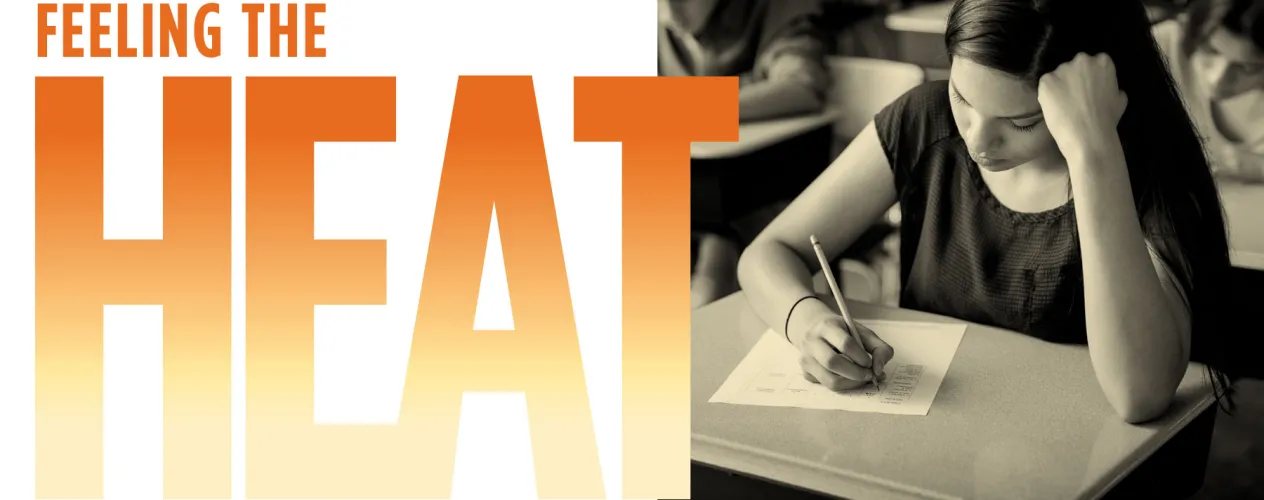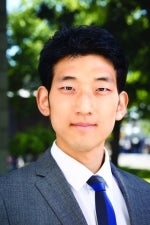Feeling the Heat
FSPH’s Jisung Park has found that rising temperatures interfere with the ability of students to learn and the productivity of workers.


BACK WHEN HE WAS A GRADUATE STUDENT, Jisung Park concluded that the insufficient urgency in addressing climate change was due in part to the way the issue was depicted.
“It seemed to me that the human element was missing,” says Park, now a Fielding School assistant professor of environmental health sciences. “For better or worse, we tend to understand the world in terms of stories, and most of the stories about climate change have revolved around non-human aspects, which can make it harder to grasp. Of course, there are limitations to anecdote-based policymaking, so I wanted to get as rigorous a training as possible to determine whether the human stories were actually borne out
in the data.”
As he delved further into the data, Park, who earned a master’s degree in environmental change and management from Oxford and a PhD in economics from Harvard, became convinced that there might be a compelling story to tell in how the warming climate affects students and workers with no choice but to learn and labor, respectively, in the sweltering heat.
In research he started as a Harvard doctoral student and has continued as a faculty member at the Fielding School, JISUNG PARK Park has documented the implications of rising global temperatures on the learning and test performances of students — a problem that disproportionately affects lower-income and minority youths, whose classrooms are the least likely to be air-conditioned.
Park studied the effect of hot outdoor temperatures on the scores of 4.6 million New York City public students on a standardized test required to graduate from high school, and found that those who took the test on a hot day fared substantially worse — for example, students taking the exam on a 90-degree day had an 11 percent greater chance of failing than those taking it in more comfortable 72-degree weather. He followed that up with a study showing the cumulative effects of heat exposure during the school year for 28,000 schools across the country. Park found that in school years with higher numbers of hot days, students performed significantly worse on standardized exams, suggesting that the heat impeded their learning.
Park and his colleagues have found that the negative effects of heat on learning and test taking appear to be offset in classrooms equipped with air conditioning. But, Park notes, low-income and minority students are the most likely to experience classrooms without adequate cooling. “We have found that a portion of the racial achievement gaps that have been reported in education are driven by the combined influence of a hotter climate and worse school infrastructure,” Park says. This equity issue also has international dimensions: “In countries with both high temperatures and high levels of poverty, such as India and Bangladesh, the effects of heat on cognitive development are likely to be more profound.”
Beyond investments in air conditioning, other strategies will need to be considered to promote cooler learning environments amid increasing temperatures, Park says. This could include administering important standardized tests during cooler times of the year or moving them to climate controlled rooms, as well as architectural approaches designed to reduce the effects of the hot weather on the school environment. “Like it or not, no matter what we do today, we’ve baked a lot of warming into our climate over at least the next couple of decades,” Park notes. “We certainly should redouble our efforts to reduce greenhouse gas emissions, but we also need to understand and direct our efforts toward the groups in our society that are least likely to have the means to adapt effectively.”
The warming climate is also exerting an economic toll. Park has found that in the United States, worker take-home pay is reduced by as much as 5-10 percent in some sectors in years that are especially hot — with 10 more above-90-degree days than average. The effect is most pronounced among outdoor workers, including those in construction, agriculture, manufacturing, transportation and utilities. In separate research in which he examined GDP growth across countries over the last six decades, Park found that hotter-than-average years reduce GDP growth, with the strongest effects in the poorest and hottest nations.
More than 15 million U.S. workers have jobs that require them to be outdoors, according to the Bureau of Labor Statistics. Park notes that just as there are economically driven disparities in the student populations affected by heat, workers in lower-income sectors are likely most vulnerable to the consequences of rising outdoor temperatures. “We need to pay close attention to which types of workers are the most likely to be exposed and how we can help them adapt,” Park says. “You can’t air-condition outdoor worksites, but you could have people work different hours of the day, provide shade, and have heat-illness prevention protocols.”
California has been a leader in establishing outdoor-worker heat illness prevention standards, Park says. He and his colleagues are currently assessing the impact of those standards in reducing worker heat illness and injury risk, along with the lessons that can be drawn as other states begin to grapple with the reality of climate change related heat concerns.
Engaging in the work has only sharpened Park’s focus and determination. “Every time I go through an airport now and look out to see people working on the tarmac, I think to myself, how do you stay safe on a 95-degree day lifting heavy luggage on a pitch-black asphalt surface?” he says. “That’s become a big motivator for me. We can probably do more to protect vulnerable populations from these effects, and I hope that my work can help shed light on their climate reality.”